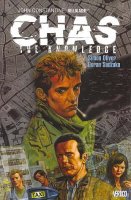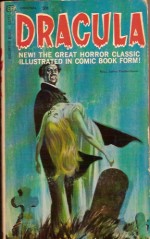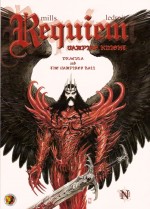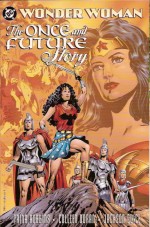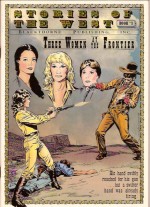
By Pat Mills & Joe Colquhoun (Titan Books)
ISBN: 978-1-84576-769-9
The fifth instalment of Mills and Colquhoun’s astonishing comic strip condemnation of the Great War (and war-mongering in general) picks right up from the previous volume (Blue’s Story) as recuperating boy-soldier Charley Bourne settles his affairs in London before reluctantly returning to the terrifying trenches and insane warlords on both sides of No-Man’s Land, whose callous and inept tactics and strategies decimated an entire generation of Europe’s manhood.
Charley’s War, originally published in the weekly comic Battle (from #200, 6th January 1979 until October of 1986), tells the story of an underage East-Ender who lies about his age to enlist in the British Army setting out to fight the Hun in 1916. Writer Mills fully exercised his own political and creative agendas on the series and, as his own always informative commentary relates, was always amazed at what he got away with and what seeming trivialities his editors pulled him up on. Here for example, as the lad rejoins his unit in April 1917, just in time for the third Battle of Ypres, the creators was allowed to wallow in historical accuracy, and some intriguing gallows humour, capitalising on the lengthy build-up of troops which forced a long period on tedious inactivity upon the already bored soldiery.
Life in the trenches was notoriously hard and unremittingly dull… except for brief bursts of action which ended so many lives. By closely following the events of the war, powerful episodes featuring such insanity as a Cricket match played out whilst shells rained down, brutal forced marches that incapacitated already shattered “Tommiesâ€, dedicated heroes destroying their own equipment and a dozen other daily insanities of the military mind are exposed with devastating effect.
The saga focuses far more on the characters than the fighting – although there is still plenty of harrowing action – and reveals to the readers (which at the time of original publication were presumed to boys between ages 9-13) that “our side†could be as unjust and monstrous as the “bad guysâ€.
Charley receives the dubious honour of being seconded a servant to the callous officer Captain Snell who thinks the war a terrific lark: thereby revealing an utterly different side to the conflict, and acts as the only voice of reason when the veterans of earlier conflicts take out their resentment on the new replacement troops – all conscripted, and commonly seen by the hardened survivors of early years as cowards and shirkers for not volunteering.
But although the horrors and madness and incessant waiting for the big show to begin are omnipresent, things do proceed: as the book closes Charley discovers that his unit has been posted to join an engineering detail short of manpower. The losses were caused by cave-ins and flooding, and Charley realises that his next job will be to complete a year-long project to tunnel under a vast ridge of solid rock and undermine the German Guns on the Messine Ridge. If they don’t get killed he and his comrades will be packing the explosives for the biggest explosion the world has ever experienced…
Brutal, dark, beautiful, instantly affecting and staggeringly informative, there has never been a series like Charley’s War: it is something future generations will scorn you for not reading…
© 2008 Egmont Magazines Ltd. All Rights Reserved.

